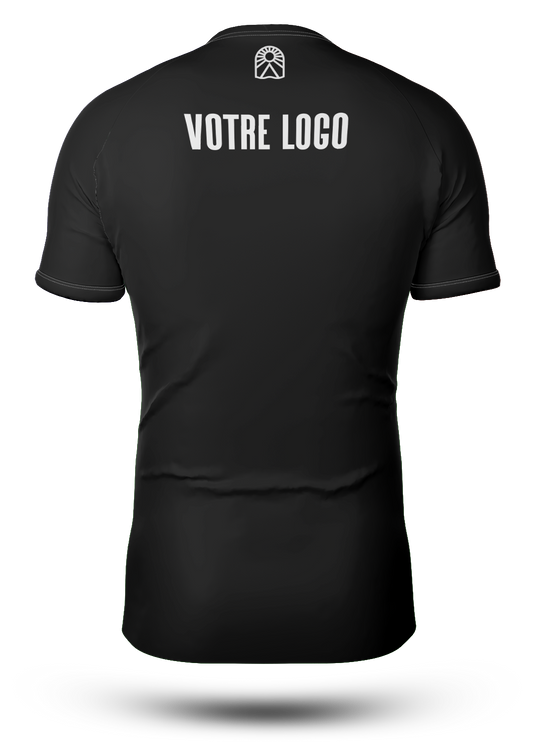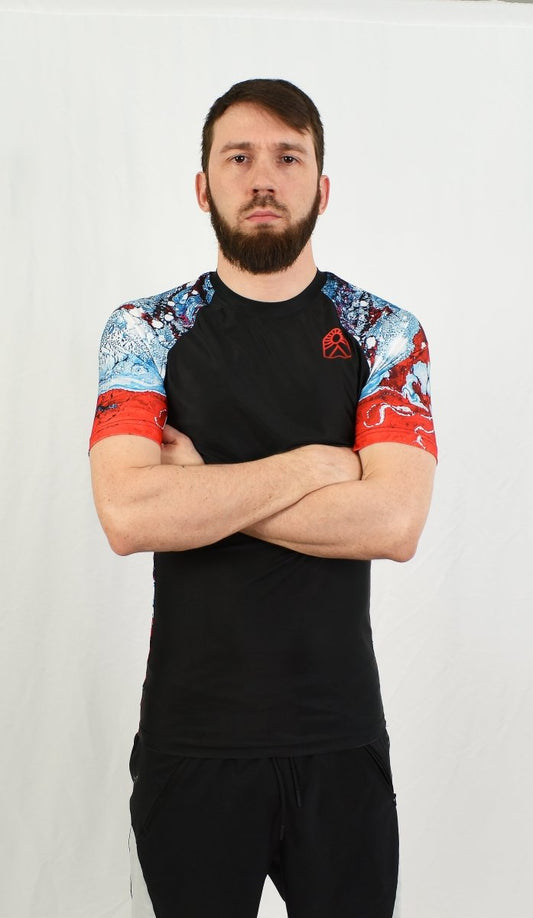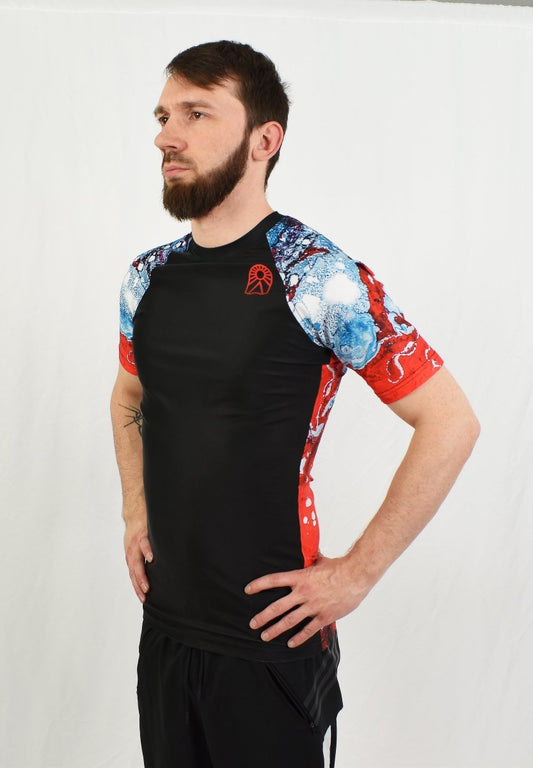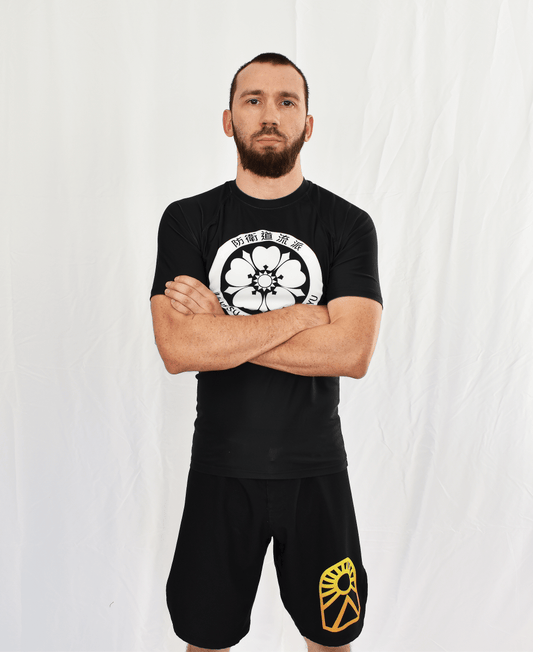
The Order of Kyokushin Karate Belts: Colors and Grades Explained
Pascal CadoretteFrom white belt to black belt: belts in Kyokushin Karate .
Getting involved in the world of Kyokushin Karate is an exceptional journey that will surely transform you from a novice to a master black belt. This traditional Japanese martial art requires dedication, discipline and unwavering determination.
As soon as a beginner enters the dojo, one immediately notices the profound philosophy and rigorous training methods that define Kyokushin. With every punch, kick and block, we are taught valuable lessons in resilience, respect and self-control.
Travel is not for the faint-hearted, as it pushes the body and mind to their limits. Self-improvement is an integral part of Kyokushin Karate.
Through countless hours of sweaty training sessions, the student gradually refines his technique, strength and mental toughness. To guide his path, a Karateka will have to climb the ladder... Or at least, the belts!
From the white belt, to the orange, the blue, the yellow, the green, the brown and finally the black, a Karateka pushes his limits, continues to learn and evolve in his journey through Kyokushin Karate.
In this article you will not only discover what the philosophy of Kyokushin Karate is, but also the meaning of each of the Kyokushin Karate belts.
What is the history and philosophy of Kyokushin Karate?
Kyokushin Karate has a rich history dating back to the mid-20th century. It was founded by Masutatsu Oyama (Mas Oyama), a legendary martial artist who sought to create a style that emphasized realistic combat and personal development.
Inspired in particular by Miyamoto Musachi , the philosophy of Kyokushin is rooted in the concept of "kyokushin", which translates to "ultimate truth". This leads practitioners of this martial art to strive to seek knowledge, question themselves and constantly improve their skills.
Kyokushin Karate is known for its emphasis on fitness and full-on fighting. It is not a gentle and quiet sport, on the contrary, one seeks to surpass oneself, toughen up and strengthen one's body and mind. Fighting ( Kumite ) is an excellent example of this philosophy, in which one fights to the KO without protection.
The training is intense, pushing practitioners to their limits and beyond. Through this rigorous training, karateka develop discipline, focus and perseverance, which are essential qualities on their path to black belt mastery.
The Different Colors of Karate Belts and Their Meanings
Belts and Kyus
In Kyokushin Karate, belts are the symbol of a grade and a stage of learning. They represent the stage at which the Karateka is and the elements on which he should focus to progress fluidly in his learning of Kyokushin Karate.
Each belt also has a "Kyu", which is essentially a grade between each belt that attests that the practitioner is ready or almost ready to move on to the next belt. It is necessary to have a Kyu before moving on to the next belt. The Kyu is a preparation for the belt passage exam.
The White Belt: Purity and humility
The white belt is the first belt one obtains in karate. The white belt is often associated with purity and humility. Practitioners are encouraged to approach their training with an open mind, without prejudice or pretension, ready to absorb the teachings of their instructor.
At this stage, the emphasis is on learning basic movements, posture and breathing. Practitioners must also develop their discipline and respect for the rules of karate.
12 hours of training will be necessary to obtain the Kyu and between 24 and 30 hours will be necessary to move on to the Orange belt.
Orange Belt (10th and 9th Kyu): Stability
The Orange belt in Kyokushin Karate refers to the element of Earth and symbolizes the stability of his training. The Karateka is led to work on his basic positions and his stability during his training.
At the Orange Belt , practitioners begin to deepen their understanding of techniques. They can learn more advanced variations of basic movements and develop greater coordination, speed and strength in the execution of these movements.
At this stage, the focus is on practicing the basics, movements, stances and Katas. A good stance allows the fighter to anticipate his opponent's movements and move better.
17 hours of minimum training will be necessary to obtain the Kyu and the passage is done after 35 hours of training.
The Blue Belt (8th and 7th Kyu): Fluidity and Adaptation
The Blue Belt is the third belt that can be obtained in Kyokushin Karate. The Blue Belt is often associated with fluidity and adaptation. It represents both the element of Water to refer to the ability to adapt and react with fluidity.
At this stage of his journey, the Kyokushin Karate practitioner focuses on his flexibility, his techniques and the fluidity of his movements. This is when the karateka puts more energy into his training to begin to embark on a more advanced path of Kyokushin Karate.
A minimum of 28 hours are required to obtain the Kyu and 55 hours of practice are required to move up to the Yellow belt.
The Yellow Belt (6th and 5th Kyu): Affirmation
The Yellow Belt is the fourth level in the karate belt system. The yellow color symbolizes Fire.
The emphasis is on the progression of skills and knowledge. Practitioners must master more complex movements, perfect their technique and continue to deepen their knowledge of karate.
At this point, the fighter will focus on Hara, that is, the principle of weight transfer and the power that resides in his hips to increase the force of his kicks and punches.
38 hours of minimum training are required to move up to Kyu and then at least 70 hours are required to move up to the Brown belt.
The Green Belt (4th and 3rd Kyu): Emotionality and Sensitivity
The Green Belt is symbolized by the element of Air. This belt is the one that is closest to the heart of the fighter since at this level the fighter is led to concentrate on his breathing, his strength and his style.
At an advanced level like this, the Karateka is required to consolidate his learning from the beginning. At this level, the Karateka must also be able to assert his strength and demonstrate sensitivity. Not only in the sense of his emotions, but the sensitivity of his senses. He must be able to anticipate his opponent's movements and effectively put into practice the fighting techniques he knows.
50 hours of training are required to reach the Kyu and then the transition to the brown belt is done after 100 hours of training and 1 year as a green belt.
The Brown Belt (2nd and 1st Kyu): Creativity and Practice
It is at this advanced level that the fighter is led to develop his creativity, his own fighting style and his own combinations. Just one step before reaching the black belt, the fighter must show a fine understanding of all the techniques, katas and fighting techniques.
At this final stage before becoming a black belt , the emphasis is on courage, training, strength and one's will to pass the ultimate test.
75 hours of training are required to obtain the Kyu and then 150 hours of training and 1 and a half years as a brown belt.
The Black Belt (Shodan)
The Black Belt is often seen as the ultimate achievement and mastery of Karate. The Black Belt represents the consolidation and accomplishment of all previous levels.
However, the black belt in Kyokushin Karate is also the beginning of a whole new journey, that of the Dan. That is, the grades higher than the black belt. It will be possible to reach the 10th Dan after several years of improvement.
At this stage, the fighter seeks to perfect his techniques, knowledge and movements to gradually approach mastery.









